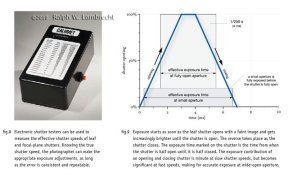holmburgers
Member
Hi everyone,
So I'm looking for a practical way to determine the effect & degree of shutter efficiency at high speeds and small apertures.
Or, rather than determine it myself, are there any steadfast guidelines that one can go by?
I read the Leslie Stroebel book and she (he?) has an elaborate method to test this using neutral density filters. I don't have any and I'm not gonna go buy any just to test this, nor do I wanna go thru a lot of film to figure it out (I know, I'm lazy and cheap! )
)
I have electronic readouts of my shutter speeds, so that variable can be eliminated, but if anyone has done some tests themselves & would like to share, I'd love to know.
For what it's worth I have a Synchro-Compur in a Schenider 180mm/315 Symmar (convertible type, the golden oldy)
So I'm looking for a practical way to determine the effect & degree of shutter efficiency at high speeds and small apertures.
Or, rather than determine it myself, are there any steadfast guidelines that one can go by?
I read the Leslie Stroebel book and she (he?) has an elaborate method to test this using neutral density filters. I don't have any and I'm not gonna go buy any just to test this, nor do I wanna go thru a lot of film to figure it out (I know, I'm lazy and cheap!
 )
)I have electronic readouts of my shutter speeds, so that variable can be eliminated, but if anyone has done some tests themselves & would like to share, I'd love to know.
For what it's worth I have a Synchro-Compur in a Schenider 180mm/315 Symmar (convertible type, the golden oldy)













